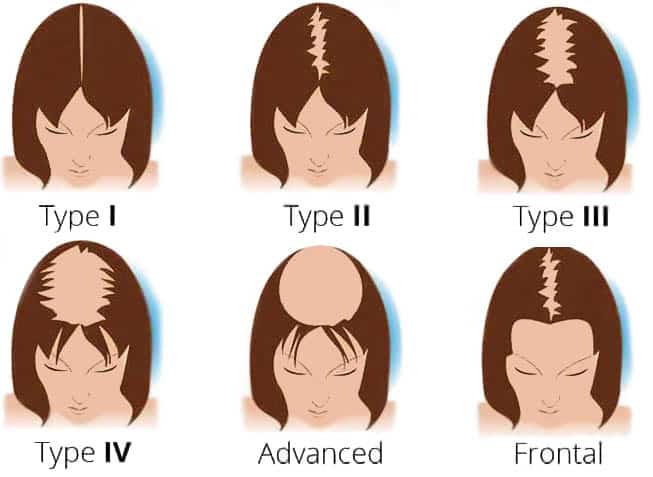Treating Female Hair Loss
Recent evidence is supporting the effectiveness of surgical hair transplant procedures as the only permanent solution for hair loss in women. A report by “Dateline NBC” has shed light on this conclusion and its positive implications.
Ludwig Female Hair Loss Chart

Modern Procedures & Technology
With the advancements in modern procedures and technology, many women have never considered the option of a hair transplant to restore their hair. Outdated misconceptions about the procedure have deterred them. However, our skilled surgeons employ cutting-edge technology to ensure natural-looking results. Gone are the days of the “plug-like” appearance after surgery. More efficient procedures and improved instruments have made surgical hair transplants more appealing to women. As a result, there has been a significant increase in the number of women seeking this cosmetic solution. Currently, women represent up to 30% of hair replacement clients, a stark rise from the roughly 5% in the 1990s.
Whether utilizing the Follicular Unit Transplantation (FUT) or Follicular Unit Extraction (FUE) method, these modern procedures yield greater hair density by allowing more hairs to be placed in each skin graft, filling in areas with existing hair. Our surgeons utilize precise instruments that work faster with minimal tissue injury. Thanks to these advancements, hair transplants have become a minor one-day surgery.
Post-Surgery Expectations
After the surgery, hair transplants are less noticeable in women as they are easier to conceal. Women typically have longer hair, making the incisions harder to detect. As the new hair grows in, the impact on a woman’s scalp is less conspicuous. Others may notice that a woman’s hair looks better, without being able to pinpoint why.
Female Hair Transplant Candidates
When it comes to female hair loss, the ideal candidates for hair transplants are those who have a genetic condition known as common female-pattern baldness. Although there are various causes of hair loss in women, heredity is the most common factor. The tendency to experience baldness can be inherited from any family member, contrary to the common misconception that it solely comes from the maternal grandfather. The more bald individuals in a woman’s family, the higher her risk of developing baldness. However, hair loss in women can also be triggered by other factors such as childbirth, iron deficiencies, thyroid abnormalities, and autoimmune diseases.
To receive a complimentary evaluation for a hair transplant surgery and to acquire further information about our specialized hair replacement services for women, please call now to schedule a consultation with the Hair Restoration Centers.
